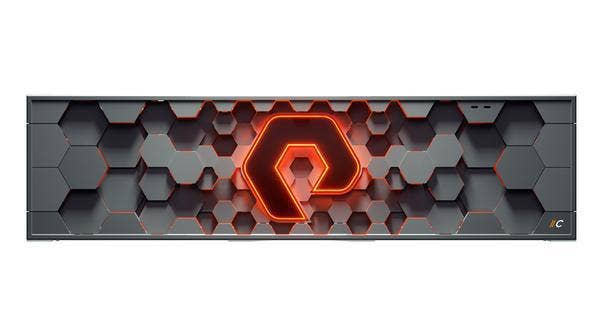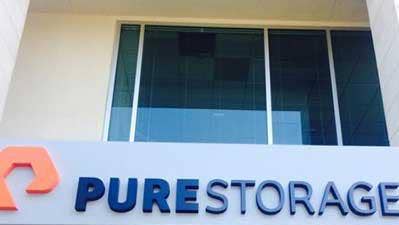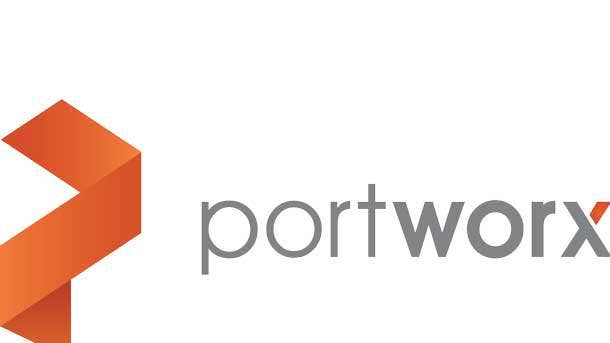Pure Storage CEO Charles Giancarlo’s 10 Boldest Remarks From BoB Virtual 2021
‘Our software runs on AWS, on Azure, on-prem, and it allows you to not only move your data, but it gives the same interfaces to the applications themselves, meaning that you can move your applications between these three environments. So it gives you ultimate choice,’ says Charles Giancarlo, Pure Storage chairman and CEO.

Charles Giancarlo Unleashed
Charles Giancarlo is not a shy man. And he has no reason to be. In the last four years, he has led Pure Storage to be the second-largest independent storage vendor on the planet, one that is focused all-flash storage and the software and cloud services around it.
Giancarlo in April was the keynote speaker at CRN’s Best of Breed Virtual Event, where he sat down with CRN Executive Chairman Robert Faletra and CRN New Editor Steven Burke for a 45-minute discussion about Pure Storage, the storage industry, the IT industry, and the IT channel. During the conversation, he talked about Pure Storage’s role in the cloud, why people should stop thinking of Pure Storage as a hardware vendor, why businesses should not depend on cloud vendors for cloud storage, the impact of private equity on the channel, and more.
For insight into storage, the future of IT and the cloud, and things to watch for from Pure Storage, turn the page.

Moving Away From Commodity Storage
There is still value to be had from innovations in storage and working with vendors who stay away from commodity storage, Giancarlo said.
“Storage was taken over by large companies that really viewed it as a commodity over a decade ago,” he said. “And the problem with the term ’commodity’ is once a technology has been placed in the commodity bucket, all of a sudden the amount of money that goes into research and development starts to dry up. In fact, we compete with companies that spend less than 5 percent of their revenue on overall R&D. And then you get effectively what you pay for. It not only becomes a commodity, but it starts to fall behind the overall pace of Moore’s Law.
“If we’re to continue to develop our applications [to keep up with] the progress of our data centers and technology in general, all parts have to keep up. Computing continues to advance. Networking continues to advance. So the great thing about coming to Pure and about Pure is, we are the best-of-breed vendor in this market. In fact, we’re the only vendor that’s really investing in storage as if it’s high technology because in fact it is.”

Pure Storage Is A Software Developer, Not A Hardware Developer
For all the features and performance of Pure Storage’s array hardware, Giancarlo said his company is at the heart a software developer with only a fraction of its R&D investment going to hardware.
“Last year we invested 19 percent of revenue in R&D, so it’s certainly the highest in the industry,” he said. “It’s because of our belief that, first of all, technology is important in this space. But secondly, we believe that we’ll be rewarded for this with customers taking us into a wider and wider amount of their infrastructure. But part of that, as you know, goes into hardware. We do have proprietary hardware. The reason why we have the proprietary hardware is we found that traditional SSDs, which were designed to replace hard disks, just did not provide the kind of price performance that we could extract from flash with our own software. ... About 95 percent of our team are software developers. But that hardware really allows us to deliver a product that operates at the peak price performance overall.
“We’re investing in several different areas. One is broadening our product line so that it fits more and more of our customers’ storage needs. Two, is moving upstream in the sense of providing more and more services that would be considered data management capabilities.”

Why Go To A Storage Vendor Instead Of A Cloud Provider For Cloud Storage
Storage vendors with close cloud ties are the best way for businesses to deal with storage in the cloud because not all data belongs in the cloud or on-premises, Giancarlo said.
“We don’t really see a world that is all cloud,” he said. “We think that there’ll continue to be a hybrid environment. And in a hybrid environment there’s a couple of other things that are very important. One is, if you build a cloud, let’s say entirely on AWS and you utilize all of the AWS services, and you decide later on for whatever reason, possibly because of negotiations on pricing, that you’d like to run it somewhere else or at least you’d like to have competition from somewhere else, you’re not going to be able to do it if the application wasn’t written to be able to be run in a different environment. It’s like an operating system. AWS is one operating system. Azure is another operating system. On-prem is yet another operating system. And so, if you write it for just one, it’s very hard to move to another.
“The benefit of working with Pure is we’ve done the hard work of making each of those environments, from a data standpoint, look the same. So we have the same: our software runs on AWS, on Azure, on-prem, and it allows you to not only move your data, but it gives the same interfaces to the applications themselves, meaning that you can move your applications between these three environments. So it gives you ultimate choice, and it gives the customer the power in negotiating with the cloud vendors in terms of pricing, and it gives them the opportunity to bring it back and forth between on-prem and the cloud.”

Turn Storage Into A Service
Pure Storage’s Pure-as-a-Service offering, which turns storage into a subscription-based service that provides partners upfront compensation for multi-year subscriptions from customers, is a big transformation for partners but one they need to do, Giancarlo said.
“From the customer standpoint, what do you do if you have immediate capacity issues today, but you want to move to the cloud in a couple of years and you’re concerned that your options today are to buy more infrastructure only to have it sitting idle in a couple-of-years’ timeframe and yet you still have a five-year depreciation period,” he said. “With Pure-as-a-Service, because it’s tied in our unified subscription, it’s a service model on-prem today, but it includes what we call a Cloud Block Store in AWS and Azure. [That] means customers can move data at any time from on-prem to cloud with no change in contract and no change in cost. They only pay for what they use when they use it regardless of where they use it. So because of that flexibility and that financial incentive, because the customer doesn’t have to lay out a lot of money, it means that customers flocked to it during the COVID period. So we’ve seen tremendous growth. And now that they’ve tasted it and they realize that, ’Wow, whether it’s on-prem or the cloud, I only pay for what I use when I use it,’ they love it. So we’re expecting it to continue to grow as COVID starts to dissipate.”

Security: The Most Important Tool Storage Partners Need
Everyone is in the security business, and that includes channel partners with a focus on data storage, Giancarlo said.
“Having a security practice, at least a practice that sits around your core assets and your core areas that you provide value around, is critically important because security is the area that will trip up any one of our systems or our customers if not put together properly,” he said. “And the thing about security is the process is as important as the tools. The processes you build around it so that you’re constantly on top of keeping up to date with the different security practices, that you have good policies and procedures in place, is so critical. And so security is part of everything we do, and making sure that our partners take their core areas of focus and make sure they have strong security practices around that is absolutely critical. ...
“This is something that we focus in a lot at Pure to make sure that our environment, that is our core code and our software environment that we have at the company, is safe from hacking. But SolarWinds is a great example of that. The more recent hack on Microsoft Office just makes us all incredibly aware that this is something that requires just constant and ongoing vigilance

The Cloud-Native Strategy Behind Pure Storage’s Portworx Acquisition
Pure Storage in September acquired Portworx, one of the leading providers of Kubernetes data services as a means to offer a comprehensive suite of in-cloud, bare metal or array data services natively orchestrated in Kubernetes and to make Pure a player in cloud-native workloads, Giancarlo said.
“Portworx, first of all, has the industry’s leading software-defined storage system for container-based workloads,” he said. “And in particular, because it’s a software-defined system, it can be started up [with as little] as a single server that might also be hosting the customer’s development of their new application, and we have a premium model. So this means that developers can get up with very low cost, having a fully managed storage service underlying their container-based application.
“Secondly, they have a Kubernetes-based orchestration layer, which allows them and allows us to layer upon services such as backup, recovery, restoration, the ability to do disaster recovery, etcetera, on top of it using the industry standard Kubernetes.
“Finally, it operates both on-prem and in the cloud on any of the hyperscalers. And what was the icing on the cake is that it also provided an ability for the customer to start out with the Portworx software-defined storage, but then when they grow up to a production-level application environment, they could swap in Pure Storage arrays, both of our arrays, without affecting the environment, that is non-disruptively.”

Private Equity And The Channel
Giancarlo, who spent about eight years at investment firm Silver Lake Partners, said that the huge influx of capital flowing into the channel, whether it’s mergers and acquisitions in distribution or channel partners, will have a big effect on the channel.
“There are several things about private equity that are a dual-edged sword. One of the great things about private equity is they are very disciplined and very tough task masters. They look at the bottom line, they look at operations. If anything, I would say private equity are tougher managers than the public market. And so, if anybody thinks about selling out to private equity because they won’t have to do quarterly earnings, well they’ll be right. They have to do them every other week, not quarterly. So it’s not easy to be managed by private equity. But the goodness of that is it really drives great performance and great practices in these organizations. So I think we’re going to see greater profitability being driven in the channel overall. And I think that overall is a good thing for the channel. ...
“Specialization and differentiation are absolutely critical, meaning that the one thing that might happen with a private equity-owned, highly scaled channel environment is that they’re going to try to be good at everything. And if you’re competing with that, you want to make sure that you have a focus, you have a specialization, and that you can easily differentiate. It’s not unlike Pure from say Dell. Dell is, I would say, unspecialized, a broad supplier across the board. We are very specialized and therefore best-of-breed in what we do. And I think you’re going to see that same dynamic in the channel.”

On The Outside Looking In
Giancarlo served on Accenture’s board of directors for over 10 years, an experience he said helped him appreciate the value of the channel and what it does.
“One of the things that I learned dramatically was how different being in the system integration business is from being in a product business and a vendor business. It’s an entirely different model. In a product business, we say whatever your problem is, our product will fix it. And in the system integration business, it’s, whatever your problem is we’ll figure it out and we’ll help you fix it. So it’s an environment where you’re focused much more on the broad customer challenge, whereas in the product business we tend to be focused more on product.
What I would say what I learned about the channel is how hard you all have to work to be able to survive day-to-day. The channel, it’s a lot of work. It’s a lot of understanding of the customer. It is very, very competitive out there. Margins are razor thin, and you have to deliver a great product at the end of the day in order to maintain the customer’s trust over the long-term. And it’s a people-intensive business. And the quality of the people is so very important to being able to drive the channel organization to greater heights. So huge amount of respect for what it takes to be a great channel and a great system integrator.

The Power Of A.I. And Storage
Giancarlo said Pure1 Meta, Pure Storage’s A.I. platform for self-driving storage platforms, provides customers with deep real-time insights into how their storage infrastructures are running to the point where it can diagnose problems before they occur.
“To give you a sense of that, over 60 percent of trouble tickets that are created for our arrays in the field are created by us and are opened by us, and we notify the customer,” he said. “In other words, we’re able to see that given the rate of increase, for example, of data on a particular array or the rate of increase of cycles that an application is using the array that that array is going to max out in, let’s say, two to three weeks. And we can go to the customer and pre-emptively arrange to go in and add capacity, add performance, whatever it might be well before the customer gets into trouble, well before the customer might even see it. And now we’re going to take advantage of that by allowing customers to, on an automated basis, say, ’Well, therefore I want more capacity, order it, and have it be there,’ frankly, without anyone actually showing up with our Pure-as-a-Service. So, we’re using data analytics in a very deep way to really enable our customers to experience just good data services without all the muss and fuss of having to play around with the actual equipment or even with managing the software of the equipment over time. As we continue forward, we’re starting to use this data, as well, as lead generation for our channel.”

Supporting Partners On Customer Calls
As face-to-face meetings return, Giancarlo said he looks forward to meetings with Pure Storage customers. However, he said, he almost never takes those meetings by himself.
“It’s rare that I or any of our team meets with a customer without the channel partner in the same meeting,” he said. “Most of our EBCs (executive briefing centers), nearly all of our EBCs that I can remember, have the channel partner in the EBC along with us. And by the way, I like being with customers as often as possible, not just when necessary. In fact, if I’m necessary, we’re in bad shape to close the deal. I like to get in early and often, if you will. But no, I would say that it’s rare when we don’t have a channel partner in a meeting with the customer.”